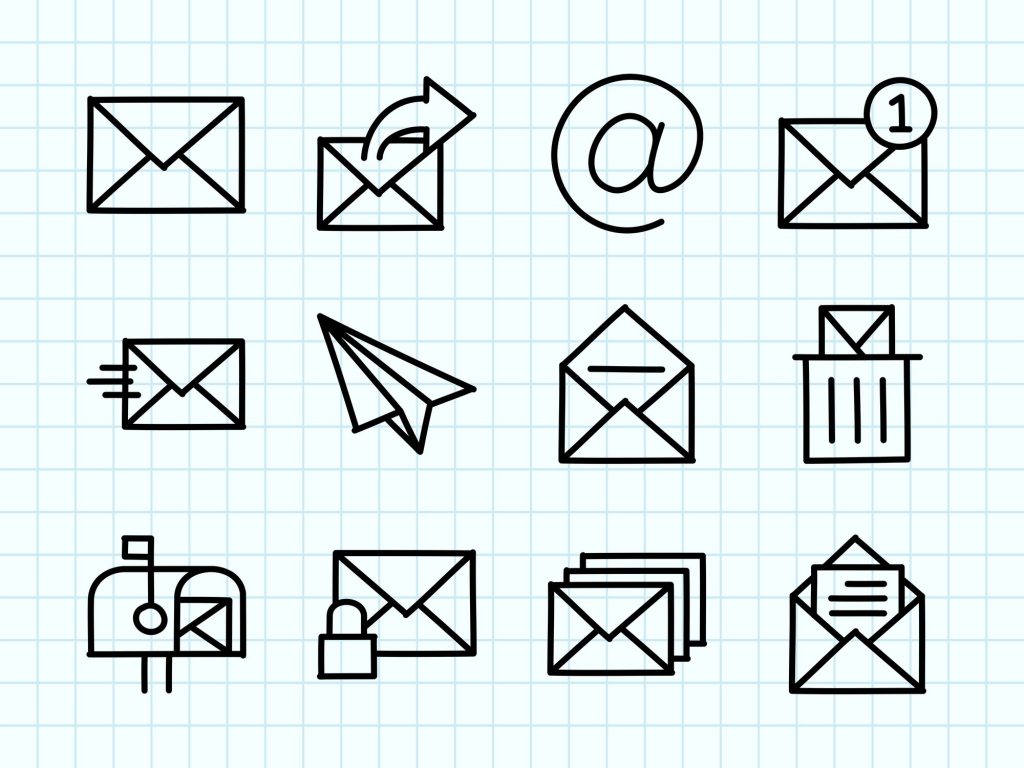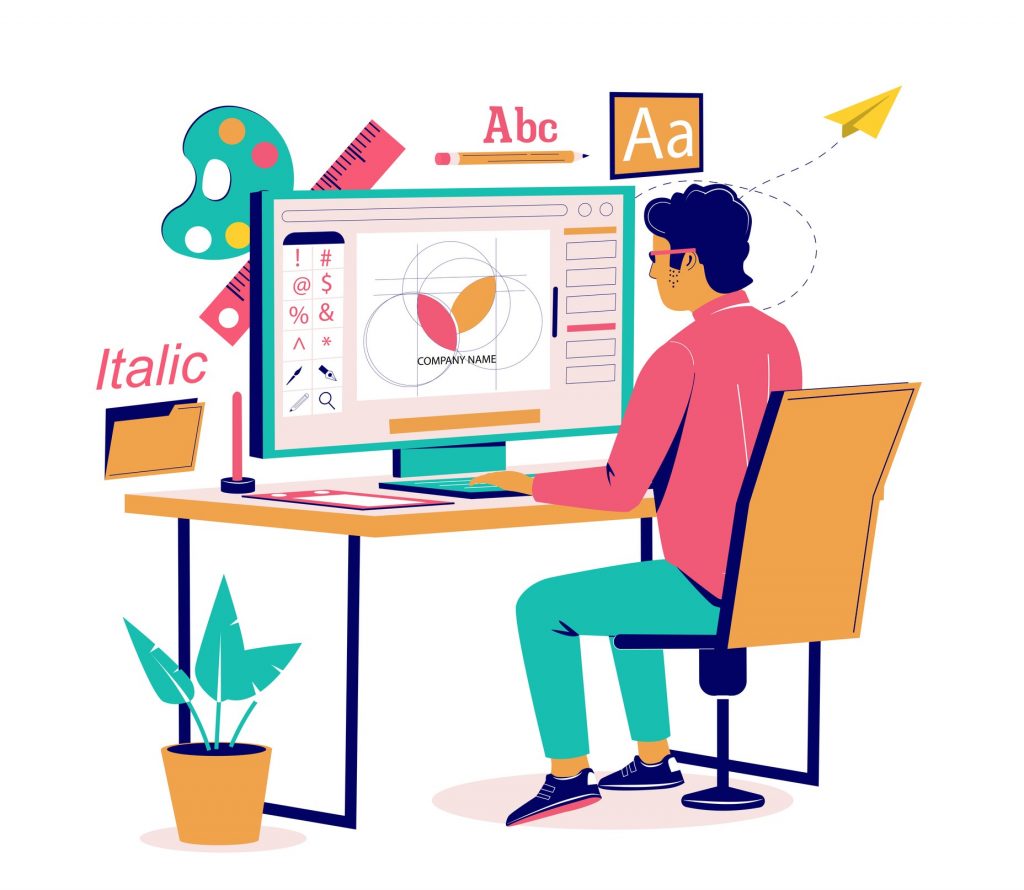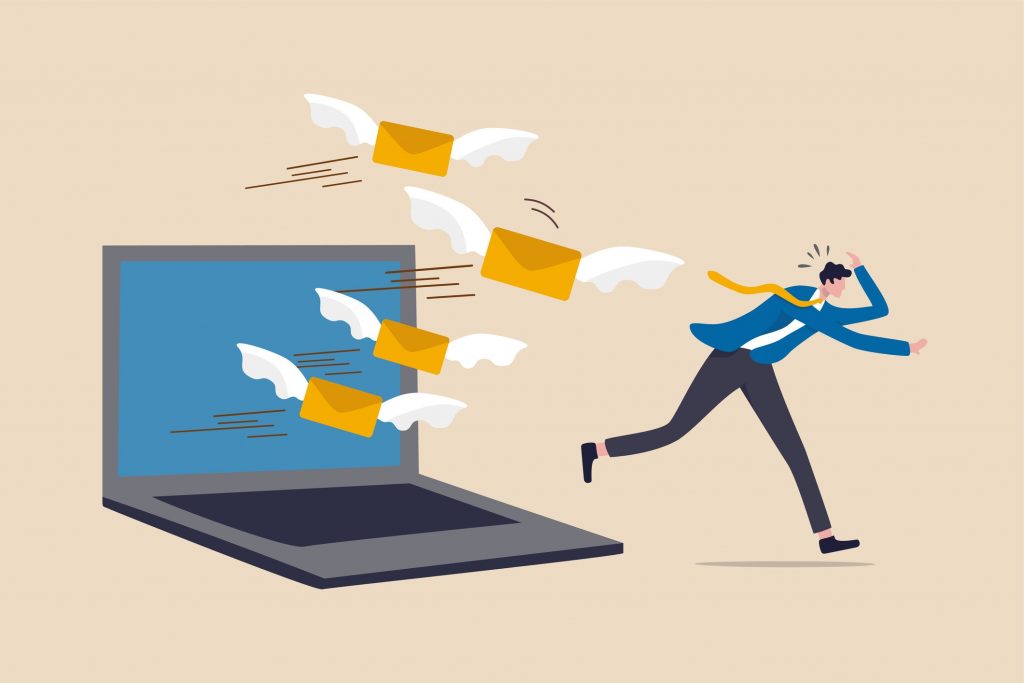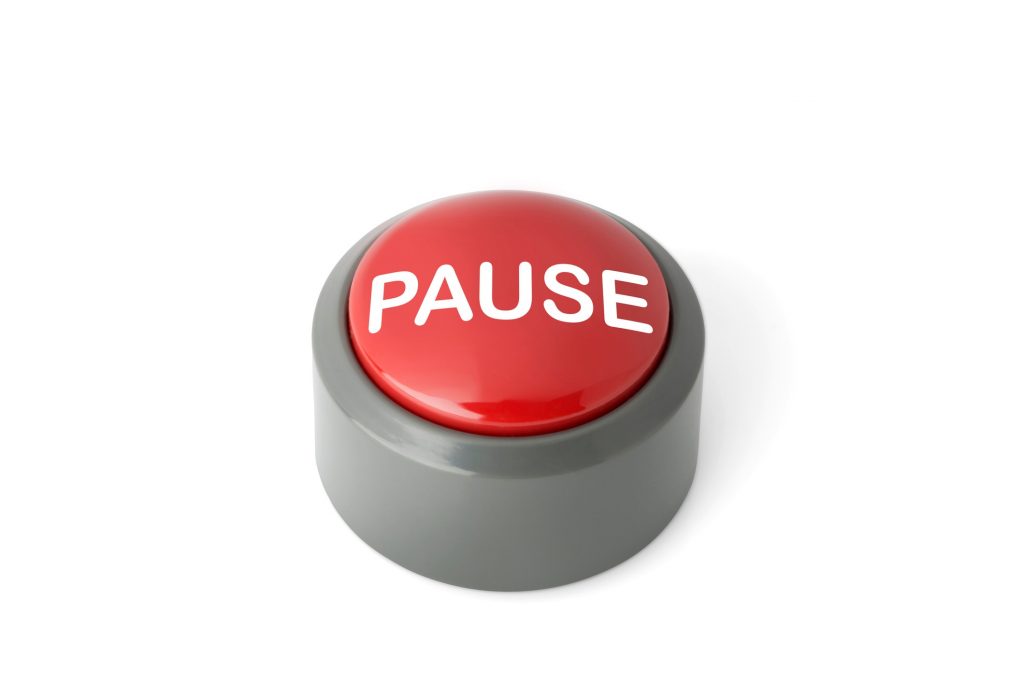How many online ads do you see per day? The number is much higher than you think. Digital marketing experts estimate that most Americans are exposed to around 4,000 to 10,000 ads each day. Maneuvering these annoying online ads has become such a habitual and subconscious practice in our everyday lives that you probably rarely even take notice. Getting around digital ads is now just an obligatory part of the online experience – the equivalent of swatting away mosquitos on a warm summer evening – a minor irritation that you dispel without a second thought.
That’s one of the primary reasons traditional forms of marketing can be surprisingly effective today – it gives people something tangible they can hold in their hands and bring into their homes. The tactile component really makes an impact. There’s an abundance of neuroscience and behavioral research that testifies to the psychological effect of engaging our sense of touch. Printed ads have been proven to elicit a stronger emotional response that makes products or services feel more desirable and valuable to the recipient when compared to digital advertising. Therefore, direct mail marketing and, more specifically, the Every Door Direct Mail marketing strategy, can provide a targeted, cost-effective, time-tested, and proven marketing strategy for your business that perhaps you hadn’t considered before.
Why Every Door Direct Mail Marketing?

So, why Every Door Direct Mail marketing? Every Door Direct Mail, or EDDM for short, is a service provided by the USPS that delivers mailing pieces to all residents of a certain area. Using this service, the USPS allows you to mail between 200 – 5,000 items per day, per zip code. It is especially effective for local businesses, like restaurants, mechanics, salons, landscapers, etc.
Instead of researching every address or prospect, you can simply target everyone in a specific area all at once. This allows you to focus on your marketing campaign, customer service, and sales, saving you both time and money. You do not need a mailing list or special permit to do EDDM and it’s offered at a discounted postal rate.
How Do I Create an EDDM Campaign?

To create an EDDM campaign, you simply:
- Design and create your EDDM piece (using the helpful tips from this article!)
- Order your EDDM pieces online.
- Select a certain area or zip code to submit to the USPS when placing your order.
- Place your order through USPS by following their steps!
If you’re still feeling skeptical about the efficacy of EDDM, I don’t blame you. I realize that direct marketing is seemingly archaic, but studies indicate that direct marketing actually receives response rates six times greater than all digital channels combined! Integrating direct mail and digital campaigns increases website visits, conversion rates, and ROI. Of course, there are still obstacles. Most importantly, we all still receive a considerable amount of literal junk mail we toss out mindlessly, so it’s crucial that your mailing piece stands out from the crowd. In short, make sure your piece is NOT junk! How do you ensure your marketing pieces do not register as junk mail? Your EDDM piece must be high-quality – in material, print quality, and design. Luckily for you, we’re here to help with all three of these elements. You can rest assured that the print quality and paper stock will be up to par by ordering from 123Print.com. At 123Print, we’ve streamlined the process of ordering EDDM pieces. Simply search for either DP8840 (for the 9 x 6.25 size) or DP8841 (for the 11 x 6 size) on 123Print.com. These are fully customizable and easy to order. Best of all, we have expert-level customer service representatives and graphics specialists eager to help you through the ordering process. And, while we don’t provide full design services from scratch, we’d never want to leave you hanging! So, read on for some helpful guidelines to create a design that is sleek, modern, professional, and attention-grabbing.
Design, Templates, and Execution

First, let’s consider some of the basic principles of design. The six design principles that I think are the most applicable for a Direct Marketing piece are:
- Balance – Balance is the visual weight distribution of objects, colors, and space in your design. Balance can be achieved with either a symmetrical or asymmetrical composition. It is achieved through the careful placement of the elements within a design.
- Contrast – Contrast in design is emphasizing or creating striking differences between elements to achieve more visual interest. Applying contrast to a design allows you to emphasize or highlight key elements of your design. More contrast can be achieved by using shapes, lines, size, orientation, or colors. As mentioned in my previous article 3 Expert Ways to Make Your Art Pop, complimentary colors are usually the most effective for creating contrast in design and are pleasing to the eye. For more on that, check out that article!
- Repetition – Repetition helps create a sense of cohesion and unity in a composition by repeating elements throughout the entire piece. You can repeat a particular format, a color, a shape, a bold font, or a texture for example. Color is one of the most important elements to repeat throughout a piece. As a general rule, you never want to use a specific color only once. Your logo, brand colors, and other trademarks of your business should be consistently repeated throughout your marketing pieces to help solidify your brand identity.
- Proximity – Proximity is the spatial relationship between objects. Grouping related elements together in close proximity to one another allows them to be viewed as one cohesive group. This visually communicates that these object are related and helps create an organized composition with clear focal points.
- White space – White space does not have to literally be white – it is simply the negative space in the composition – the absence of text and graphics between elements. The skillful use of white space helps create more visually pleasing compositions and ensures your layout isn’t too chaotic or cluttered. It helps the eye easily rest on the focal points of a composition while providing some visual “breathing room” around them.
- Alignment – Alignment is one of the most basic and important principles of design. It helps unify the elements on a page by creating a visual connection between them. It is also one of the key components to ensure your mailing piece looks professional. Think of reading an article with several paragraphs of left aligned text – you would immediately notice if a header or paragraph was not precisely lined up with the others even by a miniscule amount. This is why alignment is crucially important – it helps your composition look clean, organized, and intentional.
For a Direct Marketing piece, simplicity is key. Too much text or visual clutter is going to increase the chances of your piece getting tossed aside. Aim to keep it clear, captivating, stylish, and direct.
Here are some starting places:
- Plan a Composition / Layout. Decide if you want an asymmetrical or symmetrical layout. (Pro Tip: If you go with a symmetrical composition on one side, I recommend doing an asymmetrical composition on the opposite side for more visual interest.) For your asymmetrical composition, reference the Rule of Thirds. This is the most tried and true composition technique. Keep in mind that the eye is naturally led towards the upper left corner of a composition upon first viewing so that’s usually considered the best location to place your focal point. And remember the six design principles of design mentioned above!
- Select a Color Palette. Your brand colors, a complimentary color scheme, or a combination of both would be my recommendations. And keep it simple! Using no more than 5 colors is best.
- Choose 2-3 Fonts. See my previous blog, 3 Essential Rules for Using Fonts in Graphic Design, for helpful tips on this!
- Use High-Resolution Images. The standard for print is a resolution of at least 300 dpi. Make sure your logo, stock photography, and any other images or graphics you are using meet this standard.
Although the principles of design are always crucially important, EDDM pieces must do more than be aesthetically pleasing because, ultimately, they must compel action from prospective clients. Typically, this is done with an enticing sale or special and you want to present what you’re offering them as quickly and clearly as possible. I recommend a simple, captivating design on one side that includes your offer or sale, a catchy headline, and just the basic details of your business (i.e. name, location, contact information). Then, you can include more refined details on the opposite side. Remember, you want to keep both sides clear, captivating, stylish, and direct.
123Print has some great design examples that use all of the principles and recommendations mentioned thus far. See products DP7357, DP7475, DP7998, and DP8070. These are all great examples of the design technique I described: one side of your postcard maintains a simple, bold, and stylish aesthetic presenting the main point or offer, and the opposite side maintains the same stylish aesthetic while presenting more detailed information. Aim to keep the overall presentation on both sides as concise as possible because people tend to get overwhelmed by large paragraphs and are less likely to engage.
Also, please note that the product examples given above are not suitable for EDDM pieces because these need to be one of two specific sizes, per USPS guidelines. That’s why we created the two aforementioned custom products on 123Print.com (DP8840 & DP8841) so that you can easily select one of the two approved sizes.
However, if you ever want to use one of our preexisting designs for an EDDM piece, you can always order one of the two EDDM products and ask us to use the art from a different 123Print product in the special requests on your order.
Summary
Here’s a helpful summary of the tips we’ve gone over so far as well as some other important things to remember:
- Reference the Six Principles of Design to help you create a compelling and professional composition.
- Avoid chaos and clutter – use a consistent color palette and limit font usage to 2-3 different typefaces.
- Order high quality prints on a high quality paper stock. (See products DP8840 & DP8841)
- Include a catchy headline and a call to action. – Grab attention and compel people to buy your products and / or visit your website and physical location!
- Keep copy short and sweet. Remember, people tend to disregard large paragraphs of information. Use bullet points, infographics, and divide text up into easily-readable, short paragraphs.
- Use high-resolution images – all logos, photos, icons, etc. need to be at least 300dpi resolution to-size. This is the industry standard for print-quality and also what we require at 123Print. Unsure if your images meet this standard? Don’t worry! We have a team of graphic professionals on staff that check every custom order for quality. You can also submit special instructions with your order to ensure you get personalized assistance. Again, we’re here to help!
- Account for a bleed/ trim area in your design. One thing that is often overlooked when creating a design for print is the bleed or trim area. Always keep in mind that 1/8 of an inch is trimmed off around the edges of all printed materials to avoid unsightly white edges on the final product. So, when you are looking at the size of postcards and other printed items listed on websites, you are actually looking at the post-trim dimensions. For example, DP8840 is listed as a 9 x 6.25-inch postcard on our site, but that means the size of your file should be 9.25 x 6.5 to accommodate the 1/8 in bleed on all sides. And remember to make sure the resolution is set to 300dpi. When designing, you should allow extra portions of your background and images to extend all the way to the edges of your file, into this bleed area, to be trimmed off. Avoid placing any text or vital portions of images too close to this trim line – remember that especially with bulk printing, there is no way for the trimming process to be exactly precise every single time, so I would keep all crucial elements at least ¼ in. away from the trim line.
- Include your logo and company’s branding aesthetic. Do you know the color codes for your company colors? Pantone colors are outdated and rarely used these days. It is a best practice to know your company’s RGB or CMYK color codes to ensure your branding is consistent across different types of media. I recommend knowing your company’s six-digit hex codes.
- Be strategic about your distribution area. Whether distributing your EDDM pieces to residential or commercial areas, you want to distribute to high traffic areas where your target demographic frequents. You can send at least 200 and up to 5,000 pieces per day per ZIP Code according to the current USPS guidelines.
- Add a call-to-action. One of the most important parts of your content is the call-to-action statement. It creates an imperative and tells your prospective clients what they should do after reading your information. “Call Us” or “Order Now” are common examples but feel free to be more creative.
More Praise for EDDM
In today’s climate of constantly being inundated with ads, it’s important to approach your potential clientele from all angles. The incorporation of Direct Marketing strategies can help give you an edge above your competitors and target new prospective clients ideal for your business. The efficacy of direct marketing is backed by statistics and science. EDDM is cost-effective, efficient, easy, and has major benefits such as greater response rates, personalization, versatility, and simplicity. We think the Every Door Direct Mail marketing service through the USPS is the perfect way to start implementing direct marketing into your overall marketing strategy for your business; that’s why we’ve made it as easy as possible.
Once you have your design ready, head over to 123Print to order today!




